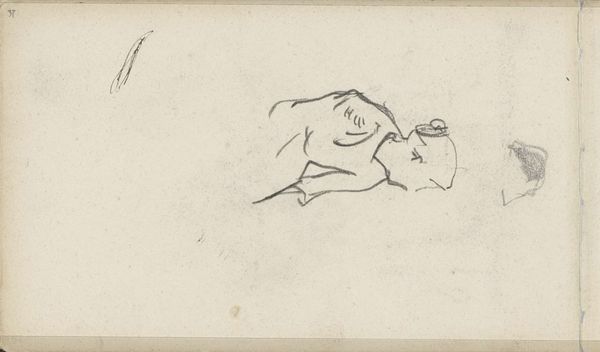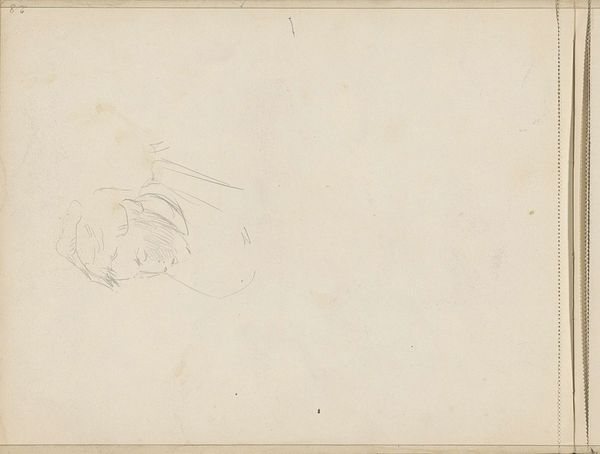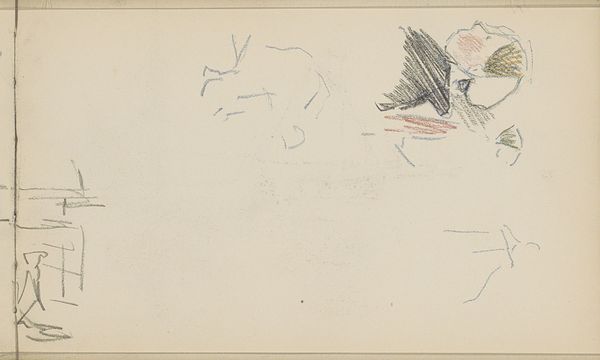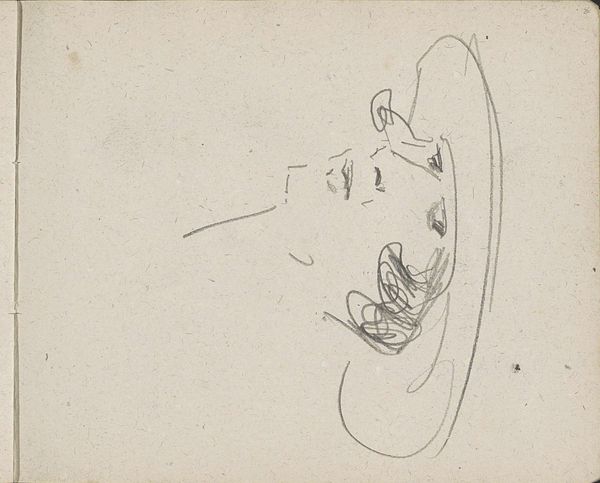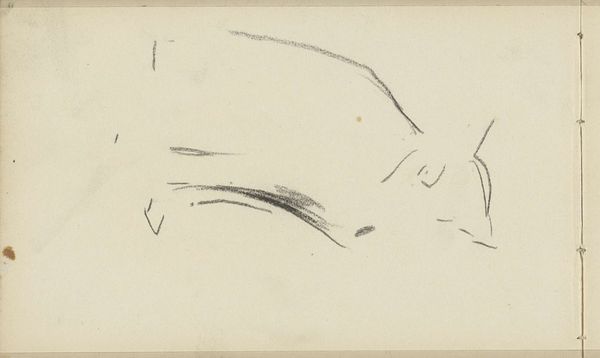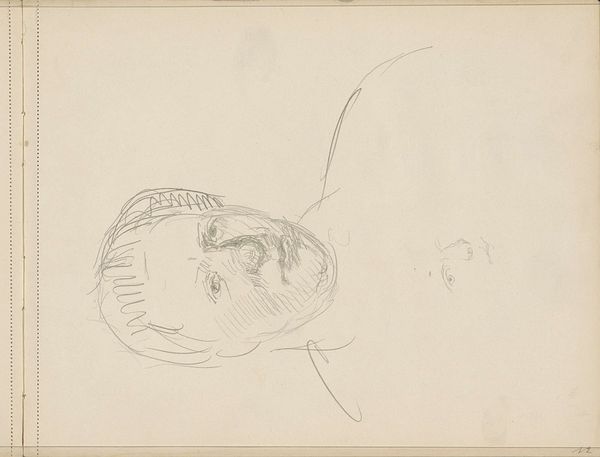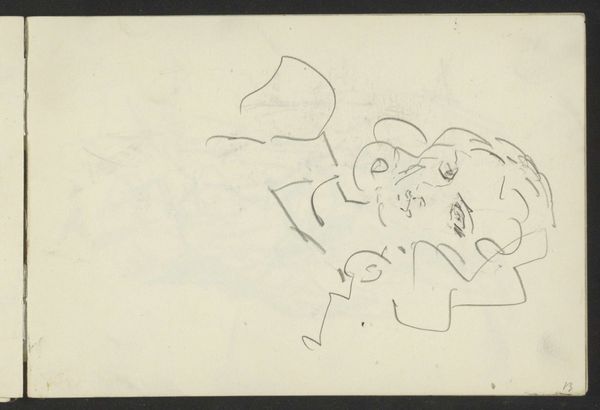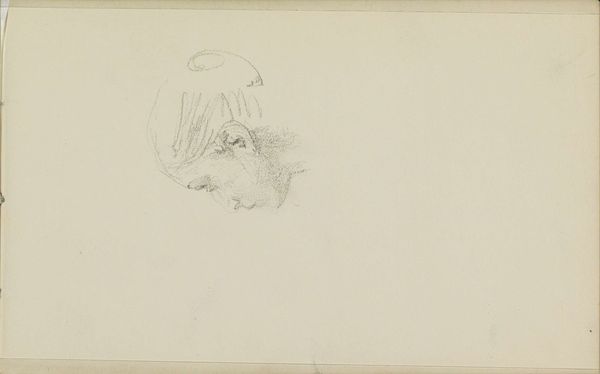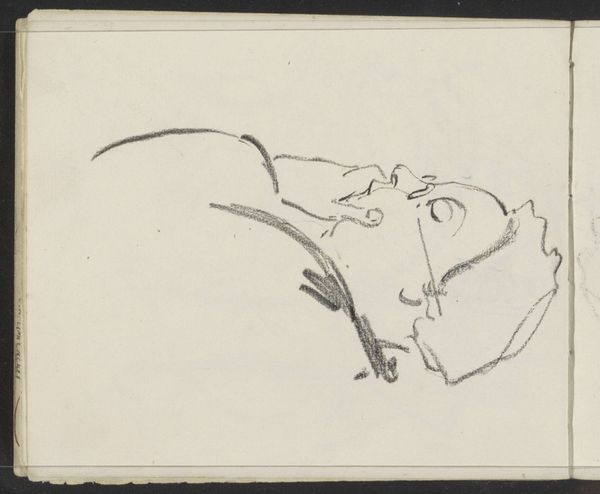
Copyright: Rijks Museum: Open Domain
Editor: So this is "Vrouwenhoofd", or "Head of a Woman," by Isaac Israels, made sometime between 1875 and 1934. It’s a pencil drawing held at the Rijksmuseum. It looks very… fragile, almost unfinished, like a fleeting impression. What do you see in this piece? Curator: Beyond its Impressionistic style, what strikes me is the intimate gaze Israels captures. This wasn’t simply about rendering a likeness; it’s a study of female representation. Consider the period. While artistic circles were becoming slightly more progressive, how were women *really* viewed and portrayed? Are we looking at a woman who subverts the stereotypical expectations? What do you think? Editor: That’s a great point! The looseness of the drawing, that unfinished quality, might suggest the breaking down of formal constraints in art—mirroring, perhaps, the social constraints placed on women at the time. Curator: Precisely! The incomplete nature, rather than a flaw, can be read as resistance. It begs us to question who controls the narrative and whose voices are often erased or sketched over. What does it mean to have agency in your own portrayal? Editor: So, it's not just a portrait, but a statement about the evolving role and perception of women? I hadn't thought of it that way initially, seeing it simply as an impressionistic sketch. Curator: Exactly. It urges us to constantly contextualize and question. Even in apparent fragments, powerful narratives about identity and liberation can be found. Editor: That’s a fascinating perspective. I’ll definitely look at art with a more critical eye from now on.
Comments
No comments
Be the first to comment and join the conversation on the ultimate creative platform.
